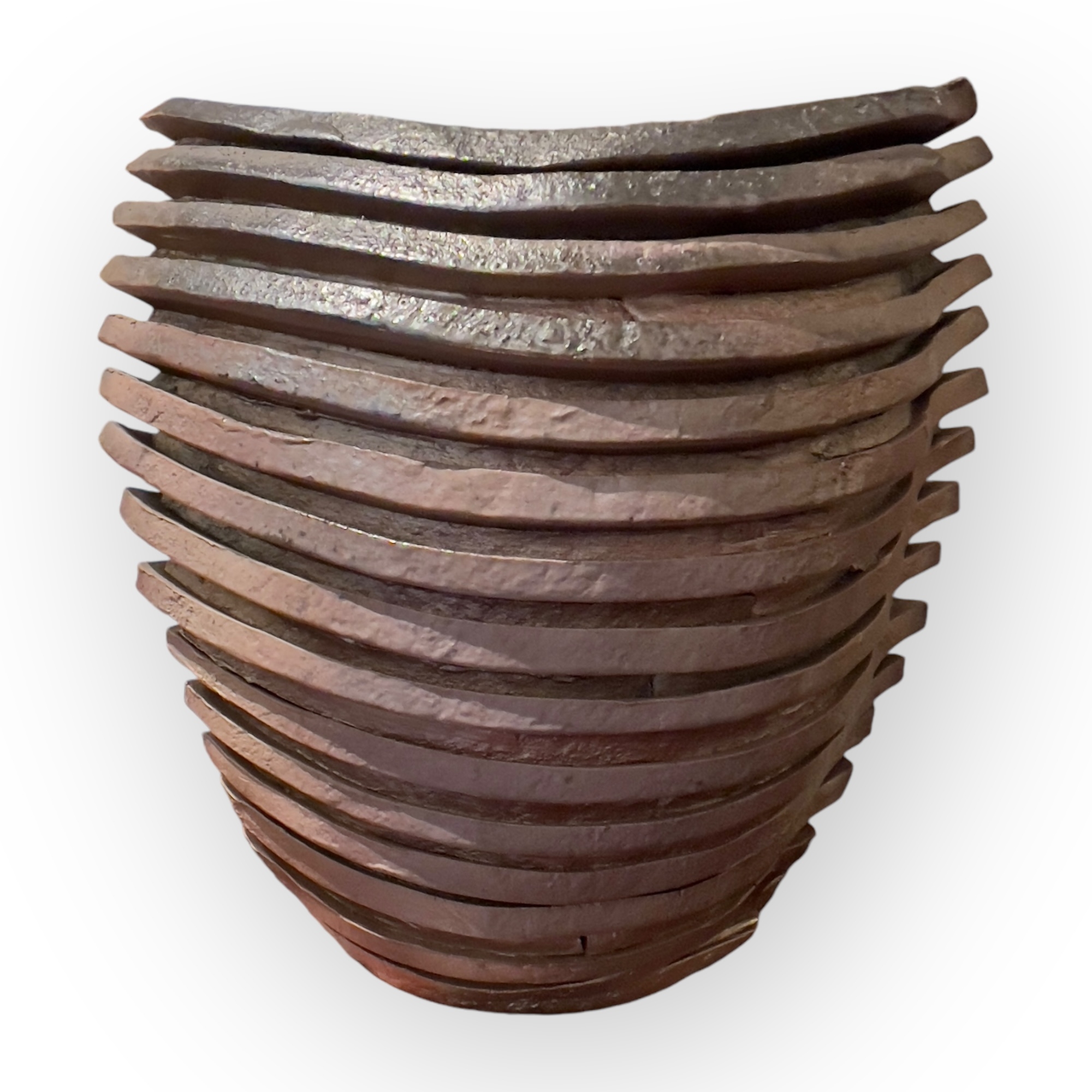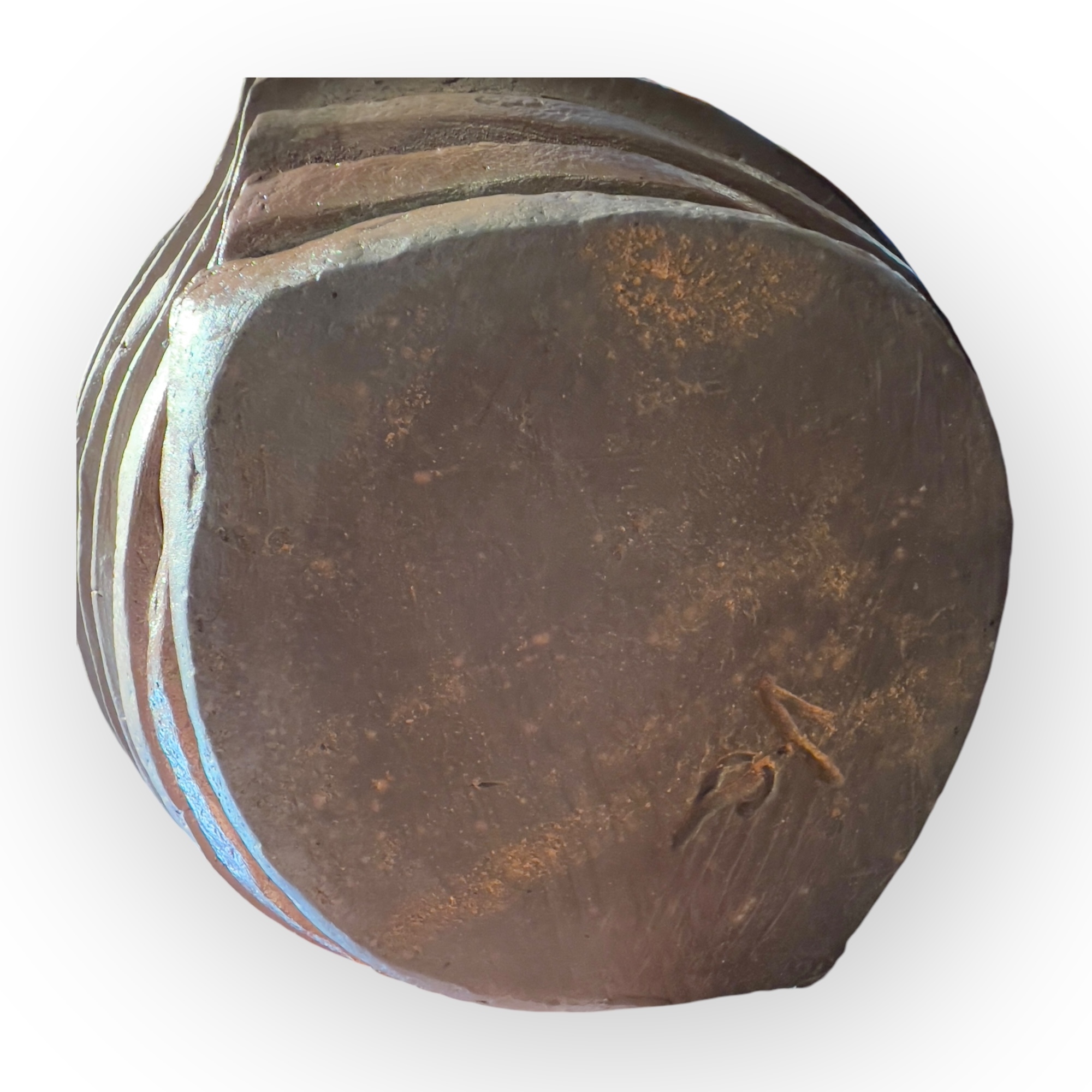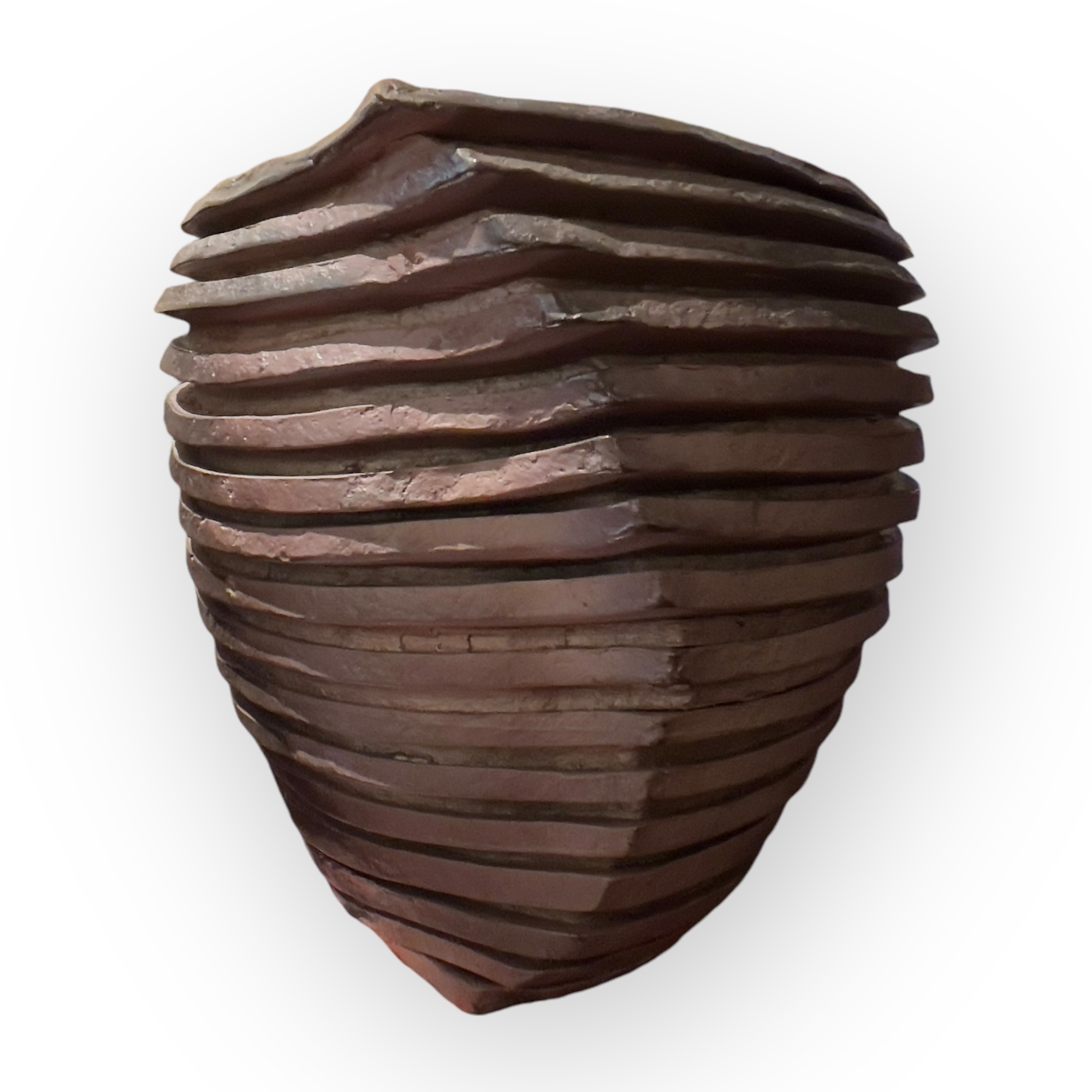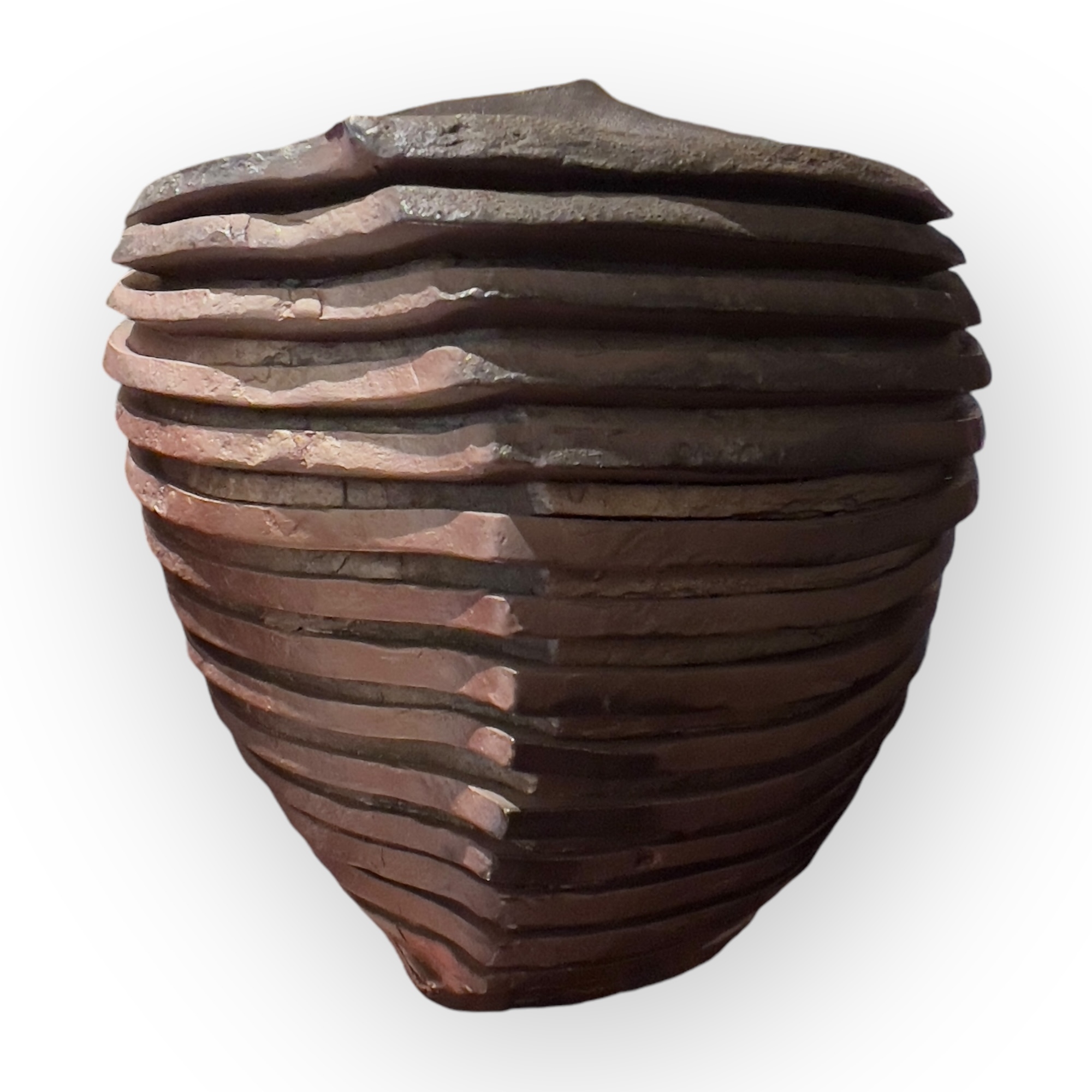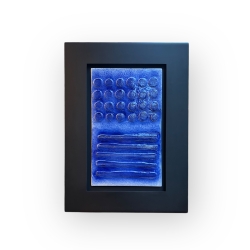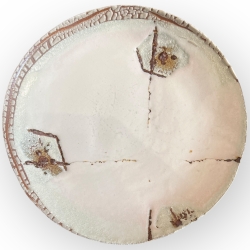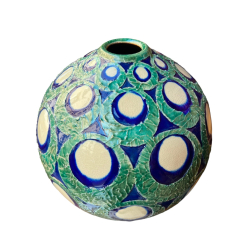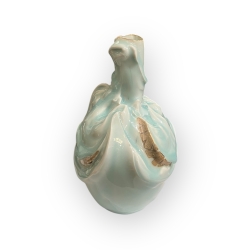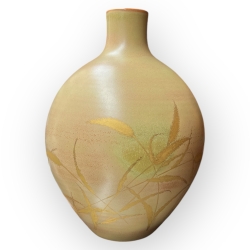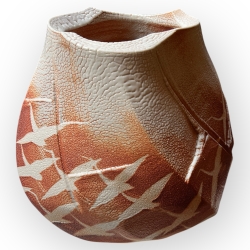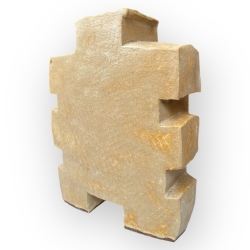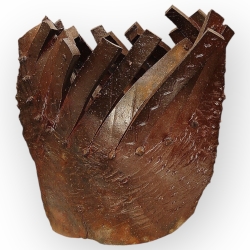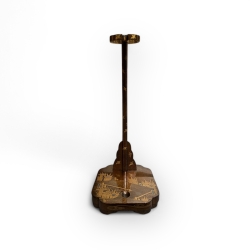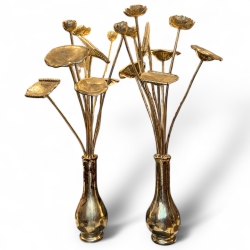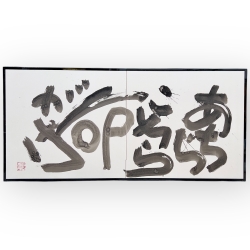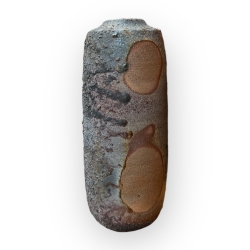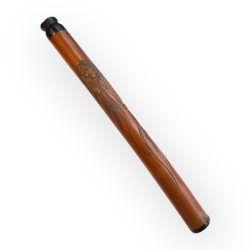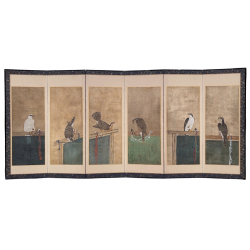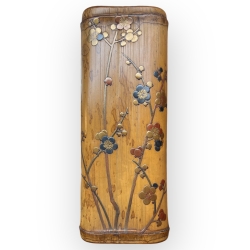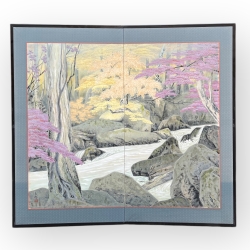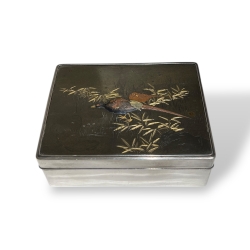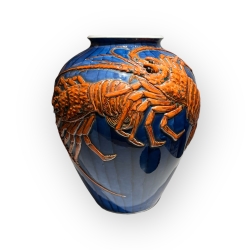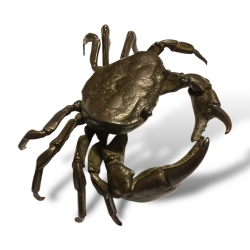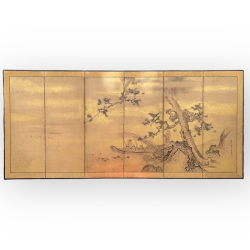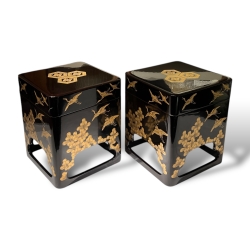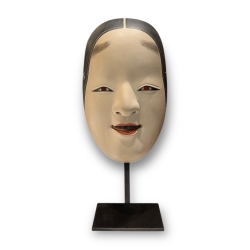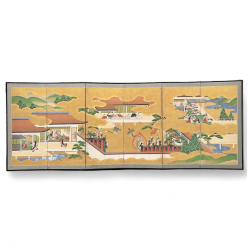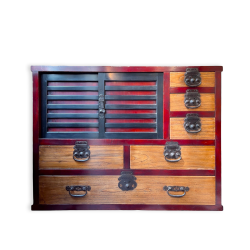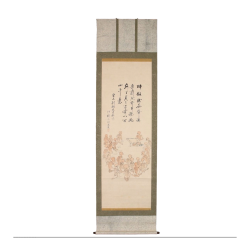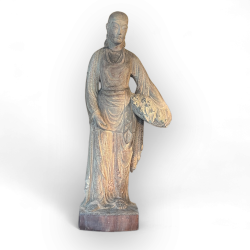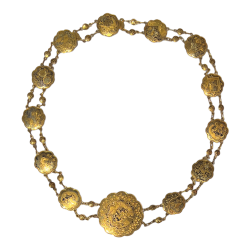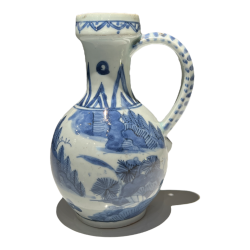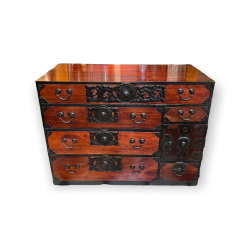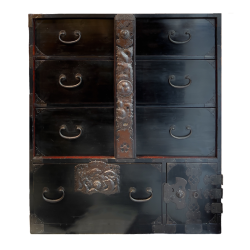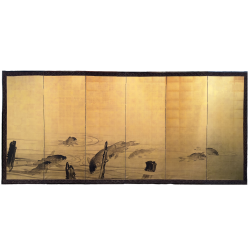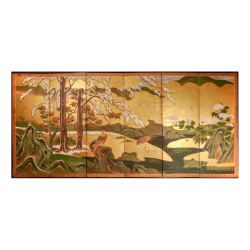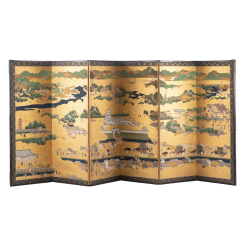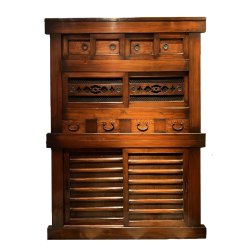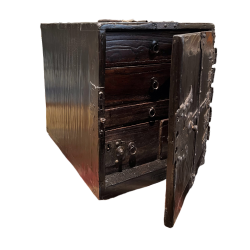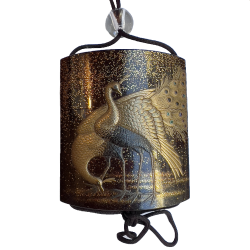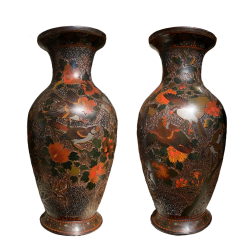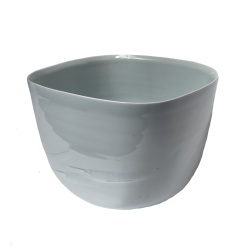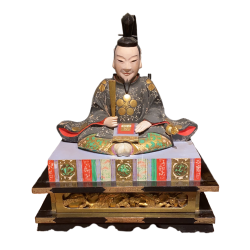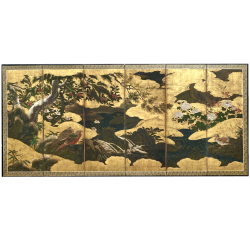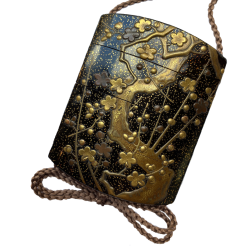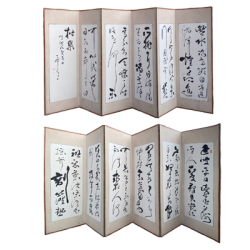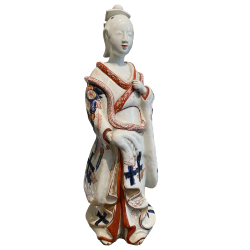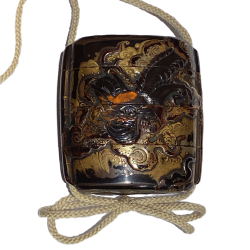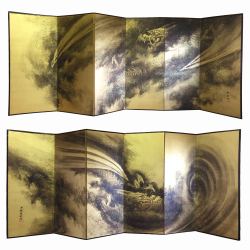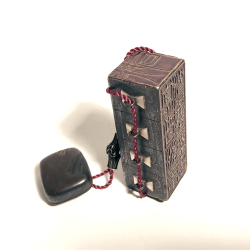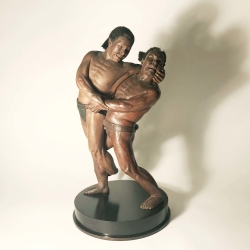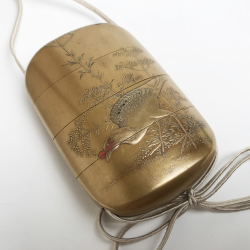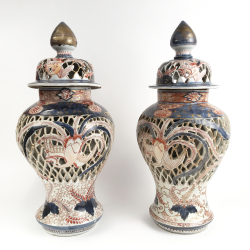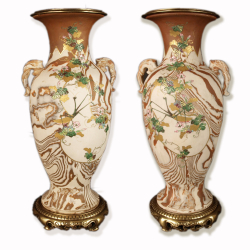
EXPERT ART d'ASIE Cristina ORTEGA Expert CNES et CEFA rts de la Chine et du Japon Asian Art-
Expert Chine Japon- Expert Asian Art - Carré Rive Gauche Paris Rue de Beaune- Expert art d Asie
Vase , Izuru Yamamoto, Bizen
Vase empilé en terre de Bourgogne.
24x 25 x 22
Izuru Yamamoto est né en 1944 à Bizen. Dès son plus jeune âge, il baigne dans un environnement artistique, influencé par son père, Toshu Yamamoto, un céramiste réputé. Après ses études secondaires, il rejoint l'Université des Arts Musashino, où il obtient un diplôme en sculpture en 1967, suivi d'une spécialisation en sculpture en 1968. Sa passion pour l'art l'amène à poursuivre ses études à l'École des Beaux-Arts de Paris pendant deux ans, où il affine ses techniques et élargit ses horizons artistiques.
De retour au Japon en 1970, il commence à travailler sous la tutelle de son père, ce qui marque le début de sa carrière dans la poterie. En 1975, il construit son propre four à Imbe, Okayama, et devient indépendant. C'est à cette période qu'il développe la technique originale du "tatakikomi", technique de façonnage de la terre. Son talent et son innovation lui valent de devenir membre à part entière de l'Association Kogei du Japon en 1979.
Son travail est rapidement reconnu et, en 1982, il est nommé artiste de l'exposition d'art préfectorale d'Okayama. Il commence alors à explorer la technique de "shussai", technique de coloration de la terre qui demande une grande maîtrise de la cuisson. En 1983, ses œuvres sont présentées dans des expositions prestigieuses telles que le Smithsonian Museum à Washington D.C. et le Victoria and Albert Museum à Londres.
En 1989, il innove à nouveau en développant la technique du "tsumiage". Cette méthode novatrice consiste à empiler des segments d'argile, créant ainsi des formes et des textures complexes. Ses œuvres sont fréquemment sélectionnées pour des expositions internationales, et il devient un juge respecté pour l'Association Kogei du Japon en 1992.
Yamamoto poursuit ses explorations artistiques en utilisant des argiles de Bizen et de Bourgogne, qu’il mélange pour faire évoluer sa technique en donnant une plus grande souplesse à l’argile. Cela aboutit aussi à une exposition au Château de Ratilly en 1996 après y avoir travaillé en résidence. Il est reconnu pour sa capacité à fusionner les traditions japonaises et européennes dans ses créations. En 2003, il est sélectionné pour la 17e Exposition d'Art Céramique du Japon, et ses œuvres continuent d'attirer l'attention à l'échelle mondiale, notamment à la Asian Contemporary Art Fair de New York en 2006 et à SOFA Chicago la même année.
Ses contributions à l'art céramique sont largement reconnues. En 2012, il est désigné Bien Culturel Immatériel Important de la Préfecture d'Okayama. Ses œuvres figurent dans de nombreuses collections publiques prestigieuses, y compris le Musée d'Art Moderne de Tokyo, le Portland Art Museum, et le Minneapolis Institute of Art.
Izuru Yamamoto vit et travaille toujours à Okayama, où il continue d'enseigner et de partager son savoir-faire avec les nouvelles générations d'artistes. Sa carrière est marquée par une quête incessante de la perfection et un profond respect pour les matériaux qu’il utilise, faisant de lui une figure emblématique dans le monde de la céramique contemporaine.
Izuru Yamamoto was born in 1944 in Bizen. From a young age, he was immersed in an artistic environment, influenced by his father, Toshu Yamamoto, a renowned ceramist. After high school, he attended Musashino University of the Arts, where he graduated with a degree in sculpture in 1967, followed by a specialization in sculpture in 1968. His passion for art led him to continue his studies at the École des Beaux-Arts in Paris for two years, where he refined his techniques and broadened his artistic horizons.
Returning to Japan in 1970, he began working under his father's tutelage, marking the beginning of his career in pottery. In 1975, he built his own kiln in Imbe, Okayama, and became independent. It was during this period that he developed the original technique of "tatakikomi," a clay shaping technique. His talent and innovation earned him full membership in the Kogei Association of Japan in 1979.
His work was quickly recognized, and in 1982, he was named an artist of the Okayama Prefectural Art Exhibition. He then began exploring the "shussai" technique, a clay coloring technique that requires great mastery of firing. In 1983, his works were featured in prestigious exhibitions such as the Smithsonian Museum in Washington, D.C., and the Victoria and Albert Museum in London.
In 1989, he innovated again by developing the "tsumiage" technique. This innovative method involves stacking clay segments, creating complex shapes and textures. His works are frequently selected for international exhibitions, and he became a respected judge for the Kogei Association of Japan in 1992.
Yamamoto continued his artistic explorations using Bizen and Burgundy clays, which he blended to develop his technique by giving the clay greater flexibility. This also led to an exhibition at the Château de Ratilly in 1996 after working there in residency. He is recognized for his ability to blend Japanese and European traditions in his creations. In 2003, he was selected for the 17th Japan Ceramic Art Exhibition, and his works continue to attract international attention, notably at the Asian Contemporary Art Fair in New York in 2006 and SOFA Chicago that same year.
His contributions to ceramic art are widely recognized. In 2012, he was designated an Important Intangible Cultural Property of Okayama Prefecture. His works are included in numerous prestigious public collections, including the Museum of Modern Art, Tokyo, the Portland Art Museum, and the Minneapolis Institute of Art.
Izuru Yamamoto still lives and works in Okayama, where he continues to teach and share his expertise with new generations of artists. His career is marked by a relentless pursuit of perfection and a deep respect for the materials he uses, making him an iconic figure in the world of contemporary ceramics.

